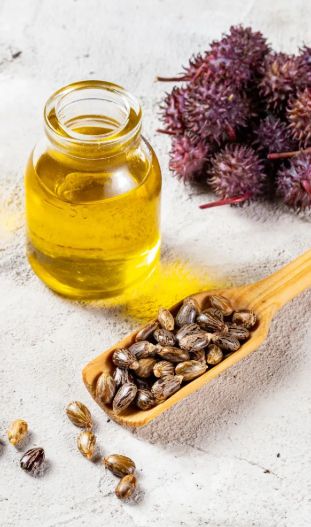
Is Castor Oil Good for Dry Skin? Discover the Benefits and How to Use It
Dry skin can be frustrating, leaving you with tight, rough patches that feel uncomfortable and look dull. Many people struggle with dry skin year-round, especially during cold weather or when exposed to artificial heating. If you’ve tried countless moisturizers and still find yourself dealing with flakes or irritation, you’re certainly not alone.
Enter castor oil—a natural remedy that’s been gaining popularity among skincare enthusiasts. Known for its deep moisturizing and skin-healing properties, castor oil is rich in ricinoleic acid, essential fatty acids, and vitamin E. But is it truly effective for dry skin, or is it just another passing trend in the world of natural skincare?
In this article, we’ll dive into the benefits of using castor oil for dry skin, how to apply it properly, and whether it’s the best option compared to other oils like coconut or jojoba. If you’re looking to enhance your skincare routine naturally, read on to discover how castor oil might just be the solution you need.
What is Castor Oil?
Castor oil is a thick, nutrient-packed oil extracted from the seeds of the castor plant (Ricinus communis), native to tropical regions of Africa and Asia. It’s been used in natural remedies for centuries, especially in beauty treatments, but why has it become a go-to for dry skin?
Castor oil is known for its unique composition. It contains ricinoleic acid, a fatty acid that offers strong moisturizing and anti-inflammatory properties. This helps castor oil deeply hydrate the skin, prevent moisture loss, and reduce irritation. While it’s thicker than other oils, its rich consistency allows it to form a protective barrier on the skin, locking in hydration for longer periods.
If you’re dealing with dry skin, castor oil can be a game-changer. It’s been recognized as both affordable and effective, making it a solid option for nourishing your skin naturally.
Is Castor Oil Good for Dry Skin?
Absolutely! Castor oil is widely regarded as a beneficial natural remedy for dry skin due to its hydrating properties. Here’s a closer look at why it works:
Scientific Support and Anecdotal Evidence
While there may not be extensive clinical studies on castor oil specifically for dry skin, research supports its benefits. The primary component, ricinoleic acid, is known for its anti-inflammatory and emollient properties, making it effective in soothing and softening dry, irritated skin. Dermatologists often recommend oils rich in fatty acids for improving the skin’s moisture barrier, and castor oil is packed with them.
A Natural Humectant
One of castor oil’s most impressive traits is its ability to attract moisture from the air and bind it to the skin. This humectant property helps the skin stay hydrated throughout the day, making castor oil perfect for combating dryness and flakiness, particularly in harsh climates or after long exposure to the elements.
Packed with Skin-Friendly Nutrients
Castor oil is rich in:
-
Ricinoleic acid: Known for its anti-inflammatory and moisturizing benefits
-
Omega-9 fatty acids: Help repair the skin’s natural barrier
-
Vitamin E: Nourishes and restores damaged skin
Top Benefits of Using Castor Oil for Dry Skin
Castor oil isn’t just another moisturizer—it offers several specific advantages for those battling dry, irritated skin. Here’s how this oil can transform your skincare routine:
-
Deep Hydration and Moisture Retention
Castor oil’s humectant properties pull moisture into the skin and lock it in, making it ideal for those with dry or dehydrated skin. Its thick texture helps seal in hydration and keeps skin feeling soft throughout the day. -
Anti-Inflammatory and Soothing
The ricinoleic acid in castor oil works to calm redness, irritation, and dryness caused by environmental factors or harsh skincare routines. It’s particularly useful for sensitive skin or conditions exacerbated by external factors. -
Healing Cracked or Flaky Skin
Castor oil’s fatty acids help promote skin regeneration, making it effective for healing cracked or rough patches. Over time, it helps restore smoothness and elasticity, improving skin texture. -
Softening Rough Areas
Areas like elbows, knees, and heels often suffer from dryness, but castor oil helps soften these spots. Regular use can help restore the supple, smooth texture you’re looking for. -
Antimicrobial Properties
Castor oil contains mild antimicrobial properties, helping to prevent bacterial buildup on dry skin. It also supports skin repair and promotes a healthy, balanced complexion.
How to Use Castor Oil for Dry Skin
Using castor oil in your skincare routine is simple and highly effective. Here’s how to apply it for maximum hydration:
-
Cleanse Your Skin First
Clean skin is essential for better absorption of castor oil. Start by using a gentle cleanser to remove dirt and impurities, then pat your skin dry before applying the oil. -
Apply as a Moisturizer
Warm a few drops of castor oil between your palms and gently massage it into your skin. A little goes a long way due to its thick consistency. Focus on areas that are especially dry, such as elbows, knees, or your face. -
DIY Castor Oil Treatment
For a more intense treatment, mix castor oil with a lighter oil like jojoba or coconut oil. Apply this blend to your skin, leave it on for 15–20 minutes, and rinse off with warm water for a nourishing mask. -
Spot Treatment
If you have specific dry patches, dab a small amount of castor oil directly onto the affected areas before bed. Let it work overnight and wake up to smoother skin.
Consistency is key to achieving the best results with castor oil. You can use it daily for lasting hydration or incorporate it into your skincare routine as a weekly deep treatment.
Precautions and Side Effects
While castor oil is generally safe for most people, it’s important to use it correctly to avoid any adverse reactions. Here’s what to keep in mind:
-
Patch Test: Before applying castor oil to your face or large areas of skin, do a patch test on a small area to check for any allergic reactions or irritation.
-
Avoid Overuse: Castor oil’s thick texture can clog pores if used excessively. Be cautious, especially if you have oily or acne-prone skin.
-
Dilute if Necessary: If you find pure castor oil too heavy, consider diluting it with a lighter carrier oil to reduce the risk of irritation.
-
Be Cautious Around Eyes: While many people use castor oil for eyelash growth, avoid getting it directly into your eyes, as it can cause discomfort.
Alternatives to Castor Oil for Dry Skin
If castor oil isn’t your preferred choice, there are plenty of other oils that can provide hydration and nourishment to dry skin:
-
Coconut Oil: Known for its fatty acids, coconut oil deeply moisturizes and provides a protective barrier.
-
Jojoba Oil: This oil is excellent for sensitive or acne-prone skin, as it closely resembles the skin’s natural oils and balances moisture levels.
-
Argan Oil: Rich in vitamin E, argan oil hydrates deeply and promotes a smooth complexion, making it a good option for dry skin on the face.
-
Sweet Almond Oil: Gentle and lightweight, almond oil is a fantastic choice for soothing dry, irritated skin with its high vitamin E content.
Conclusion
So, is castor oil good for dry skin? Yes, it is! With its rich fatty acids and emollient properties, castor oil is an effective and natural way to hydrate and soothe dry skin. Whether you’re using it as a daily moisturizer, a deep treatment, or a spot remedy, this versatile oil can help restore moisture and leave your skin feeling soft and nourished.
However, like with any skincare product, it’s essential to use castor oil properly. Be sure to patch-test, apply it in moderation, and blend it with lighter oils if necessary. And if castor oil isn’t quite right for you, there are plenty of other natural oils, such as coconut, jojoba, and argan oil, that can deliver similar results.
Give castor oil a try and let your skin feel the difference!




